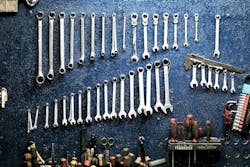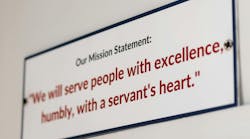If it isn’t already cliché, it probably should be: One of the hardest parts of owning a business —including a quick lube — is dealing with employees. It’s no easy feat to hire and retain the best talent for your shop. But there are steps you can take to make sure you hire the best candidates for the job and keep them happy in their roles, suggests Claudia St. John, president of Affinity HR Group and past speaker at AOCA’s iFLEX conference.
Of course, it starts with hiring. St. John recommends you spend some time thinking about everything you will need the new employee to do before you ever post the job. She says one mistake managers make is emphasizing the one or two main tasks the new employee will need to complete and ignoring the rest of their duties.
“You might have a person who is client facing, and it’s important for them to handle customer complaints and concerns, but what if you haven’t assessed how good they are at scheduling or juggling multiple tasks?” St. John said.
It’s critical to target the right audience when you post the job. Consider the different job posting sites available to you and who you’re trying to attract.
“If you’re looking for a bay worker or mechanic, you’ll probably be more likely to find them in your local newspaper or on Craigslist. If you’re looking for salespeople or to fill office jobs, LinkedIn and Indeed are very effective [websites],” St. John said.
When it’s time for the interview, St. John suggests the misstep many people take is relying on their gut when deciding who to hire — a tactic even the best of us fail at. Instead, St. John recommends employees ask their candidates to complete behavioral testing — a test like the Forecaster is great for entry-level positions and TriMetrix is better for more senior positions — which gives employers a more complete assessment of their candidates.
Another good rule to follow is to hire based on the following guidelines: One third of the hiring decisions should be based on the candidate’s experience, one third on how they perform during the interview and one third on the results of their behavioral testing.
Once you hire a new employee, how do you keep them? St. John suggests it’s critical to get those first few weeks right. She even cites a statistic: 22 percent of all new hires leave their jobs within the first 45 days. And it starts on the first day.
“When you remember your first day, you were so excited. Think about how horrible it is to show up and they don’t know you’re coming or they don’t have a desk ready for you,” St. John said. “The first day is when new employees decide, ‘This is where I want to stay’ or ‘I’m not committed to this.’”
To make sure their first few weeks go well, consider how you’ll tackle every aspect of the new employee’s onboarding. How are they going to be trained? Who will be in charge of their coaching and feedback?
St. John recommends you put together a weekly plan for the first six weeks covering the new employee’s learning objectives and who will be responsible for ensuring they meet them.
But the training shouldn’t end there. While it’s important to make sure your employees have the training they need to do their jobs — for example, OSHA training — a key factor for employee engagement is knowing what’s expected of them and how well they are meeting those expectations. St. John recommends giving ongoing feedback, about every two weeks. This way the new employee knows not only what they need to improve on, but also what they’re doing well. This is especially true for millennials.
“They’ve been given feedback their whole life. Once they start working, they enter this feedback void. We’ve raised them this way, so we should continue throughout their working life,” St. John said.
Hiring and retaining employees may be one of the most difficult tasks you are faced with as a quick lube owner, but taking some key steps before and after you hire a new employee can help make those tasks a little bit easier and significantly more successful.
EMILY SCHMITT is editor at the Automotive Oil Change Association. For more information on membership in AOCA, call 800.230.0702 or visit: www.aoca.org





